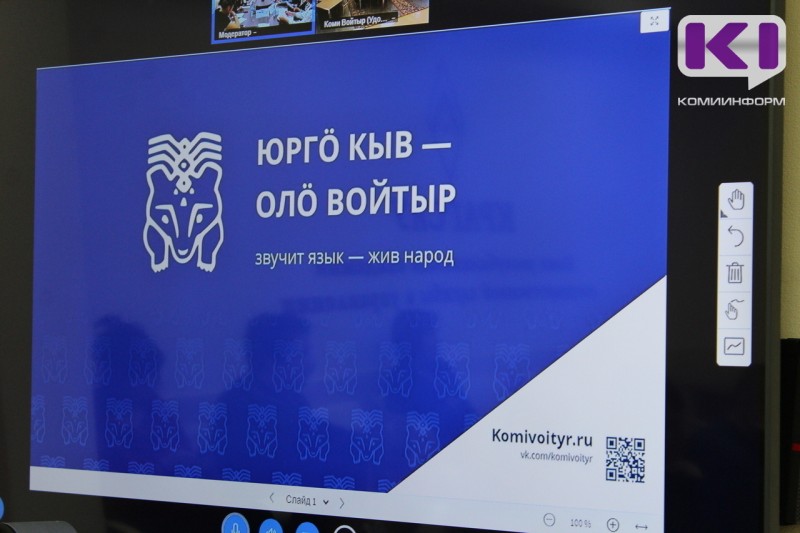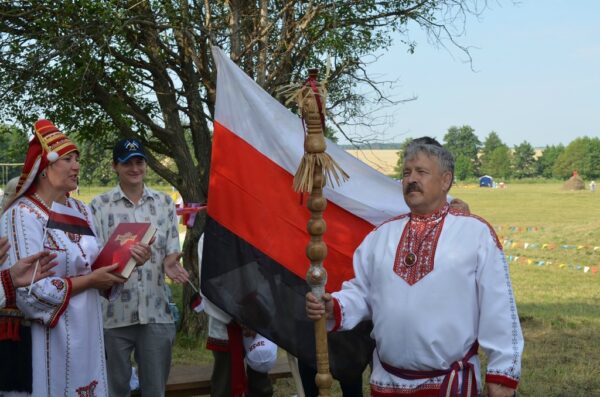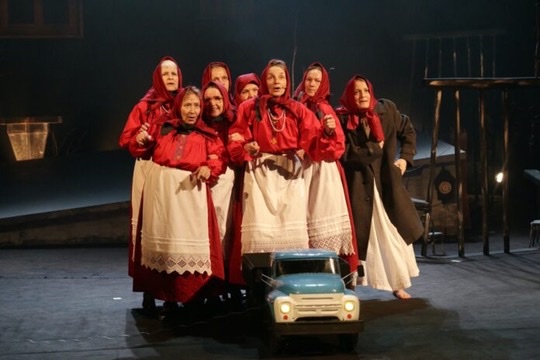Komi celebrated Komi Language and Writing Day
On the third Sunday of May, which this year fell on 19 May, the Russian Federation celebrated the first Komi Language and Literature Day, which became a national holiday in 2023.

In fact, before the Komi Language and Writing Day, the Komi Literary Language Day has been celebrated since 1992. That year, the Komi language became the official language of the Komi Republic and the Language Law was adopted. The Komi were the first nation in the Russian Federation to adopt a language law.
Komi Language and Writing Day
However, the new national day was celebrated quite widely. The VKontakte page of Komi Voityr, the national representative organisation of the Komi, received poetry and music contributions in Komi from all over the Republic. Greetings also came from St Petersburg and Riga, where the Komi poet Alyona Mitina lives. Komi societies in Moscow and St Petersburg also joined the campaign. For example, an exhibition of Komi books Мед сьӧлӧманыд олас коми кыв! (‘Let the Komi language live in our hearts’) will be opened at the Komi Republic Representative Office in St Petersburg. A large number of events were organised for children and young people, with the Children’s and Youth Library of the Komi Republic as the main organiser. Students were also involved, with an online action ‘A Komi language teacher through the eyes of a student’. In total, more than 300 celebrations were organised.
Moscow festivities
As has become customary, however, all the republics of the Russian Federation organise their central events in Moscow in the pavilions of the International Forum ‘Rossiya’ (old VDNKh). So it was in one of these pavilions that leading Komi cultural figures and officials had gathered to celebrate Komi Language and Literature Day. Books were presented, the history of the development of the Komi language was discussed, and the founder of the Komi alphabet, Stephen of Perm, was praised.
During the three days, the pavilion 75 hosted master classes in Komi handicrafts, quizzes and opportunities to learn the Komi language. At the same time, the 90th anniversary of the Union of Komi Writers was celebrated with performances by leading Komi writers and poets. Pavel Limerov, editor-in-chief of the Komi magazine ‘Art’, gave a lecture on the history of Komi literature, with great names such as Ivan Kuratov (1839-1875) and Kallistrat Zhakov (1866-1926). However, the highlight of the day in Moscow was the presentation of a collection of writings about the first bishop of Perm, Stephen of Perm, the apostle of the Komi people and creator of the Komi alphabet.
Reality
There was no mention of the situation of the Komi language – judging by the coverage – but it was noted that Komi is on the increase everywhere and that there are already 6000 articles in Komi on ru-wiki, the Russian state’s alternative to Wikipedia.
But the situation with the Komi languages is bad. In 2010, 156,099 people in the Russian Federation spoke Komi-Zyryan, in 2021 it was 108,598, a decrease of 30%. The number of people speaking Komi-Permyak has fallen to 41,447. Komi is regarded as the mother tongue by 66% of the Komi and 69% of the Komi-Permyaks. More than 30% of people who call themselves Komi in the survey claim Russian as their mother tongue. This is something to think about for the Komi Language and Writing Day.
Komi written language
Between 1372-1375, Stephen of Perm created the first 24-letter Komi alphabet, the anbur, inspired by the Greek alphabet and traditional Komi family signs. The reason for the creation of the alphabet lies in the Christianity that was spreading among the Komi. The name ‘anbur’ comes from the first two letters of the Komi alphabet, an and bur.
The Komi are one of the oldest Finno-Ugric peoples with their own written language. Anbur was used from the 14th to the 17th century, and 236 words written in this script have survived. Cyrillic was used for the Komi language from the 18th to the beginning of the 20th century. Over time, the Komi language has been written in several different alphabets. In 1918-1930 and 1936-1938, the Molodtsov alphabet was used, based on the Cyrillic alphabet, while in 1931-1935 the Latin alphabet was in use. Since 1938, the written language has been based on the Cyrillic alphabet again, but the two letters i and ö are derived from the Latin alphabet. A memorial to the letter Ö has been erected in Syktyvkar.





